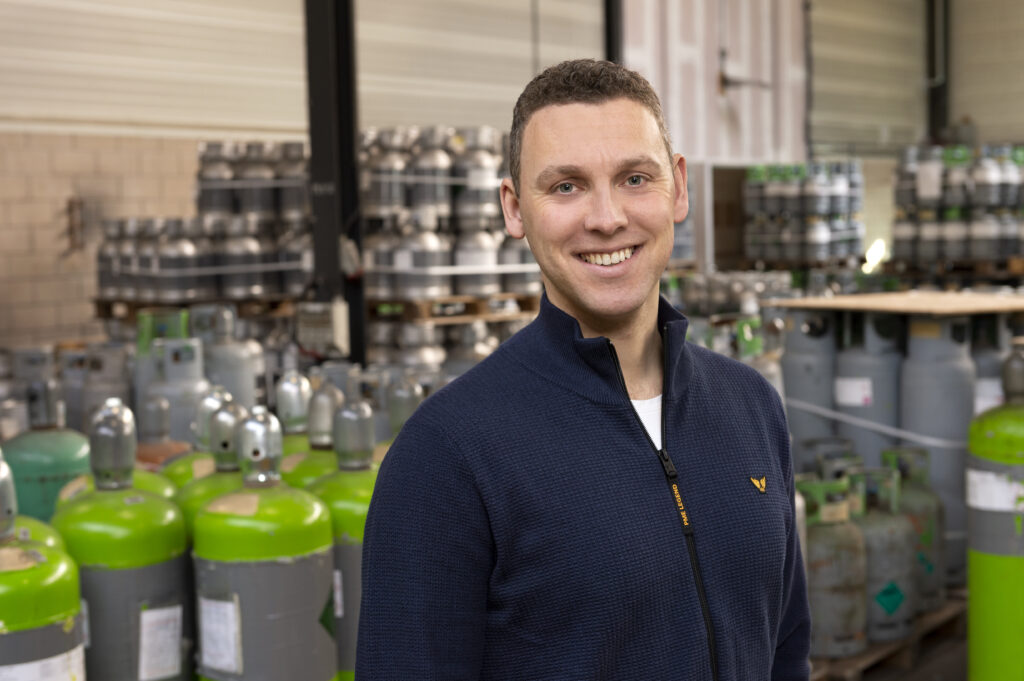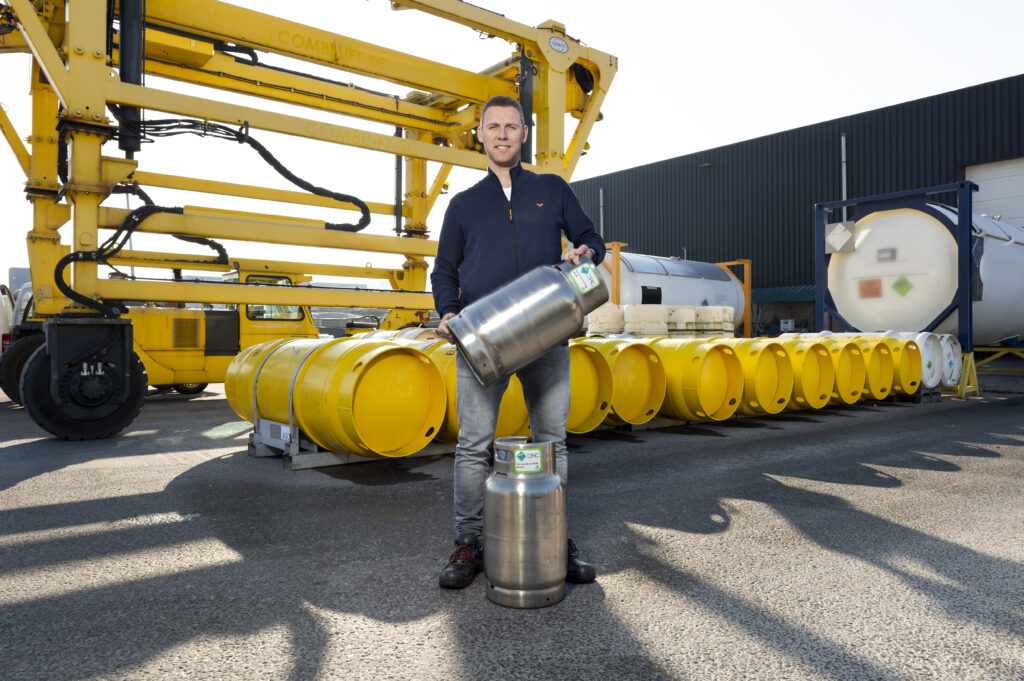Before a car can be dismantled, the fluids must be removed from it. This is either done manually or in a so-called drainage installation. One of the fluids that is removed from a vehicle is the refrigerant used by its air-conditioning system.
Recycling process
The recycling company that ARN works with in the recycling of refrigerants is Climalife. Special refrigerant cylinders containing the gas from automotive air-conditioning systems are picked up from the various car-dismantling companies throughout the Netherlands and collected at Veracom in Waalwijk. From there, they are then transported to Climalife in Bergen op Zoom, where the refrigerant is recycled and upgraded to a product that has the same properties as new refrigerant.
At Climalife, the used refrigerant enters the recycling process, explains Climalife Sales Manager, Marco Oostdijk. It is filtered and brought back up to spec so that it can be returned to the market. The recycling percentage is over 95 per cent. “Generally speaking, the products we receive from ARN are of an excellent quality. The contaminants we usually encounter are oil, moisture and non-condensable gases and we can remove this kind of contamination from the supplied refrigerant.”

High-value collection and recycling
ARN collects two types of refrigerant: R-134a and R-1234yf. The latter is predominantly used in newer vehicles and therefore mainly comes from cars that have been involved in road-traffic accidents. Gases that exacerbate global warming, such as refrigerants, may only be collected and processed by accredited companies. Oostdijk cannot overemphasise the importance of high-quality collection and recycling. Refrigerants are subject to stringent regulations. On the strength of the F-Gas Regulation, for example, there is a product quota for new refrigerant that is brought onto the market. And if there is less and less of it, it stands to reason that the price will rise. “Collecting used refrigerant and then recycling it means you are using the available raw materials much more efficiently, which fits seamlessly with our vision of a circular economy.”

Collaboration with ARN
ARN’s collaboration with Climalife dates back over 15 years and in all that time the bottom-line that underscores it has not changed, continues Oostdijk. “We are constantly exploring how the process can be made even more efficient. For example, driven by cost and environmental considerations, we have started combining the collection and delivery of the cylinders in Waalwijk.” He is keen to stress that for the quality of its product, Climalife depends on what ARN supplies. “And like I said earlier, that quality is always exceptionally high. What’s more, even if we do encounter mixed gases, ARN does everything it its power to find out where in the chain it went wrong.”
Climalife and ARN will continue their collaboration on the same footing In 2023. “Our shared objective remains the same: to maximise the collection of refrigerant and keep the recycling percentage as high as possible.”